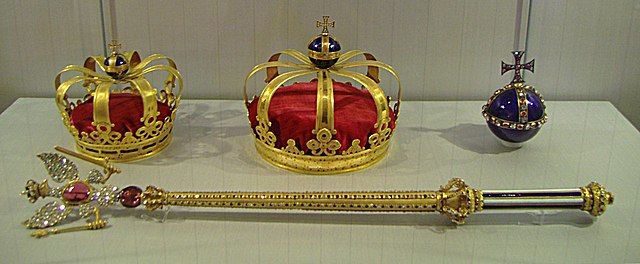Loading AI tools
From Wikipedia, the free encyclopedia
The Prussian Crown Jewels (German: Preußischen Kronjuwelen) is the royal regalia, consisting of two crowns, an orb and a sceptre, used during the coronation of the monarchs of Prussia from the House of Hohenzollern. After the King of Prussia became German Emperor on the establishment of the German Empire on 18 January 1871, they were no longer used as the position of King of Prussia while still remaining, was a title of lesser importance compared to the new role as German Emperor. There was no crown for the German Empire, although a heraldic version existed.
You can help expand this article with text translated from the corresponding article in German. (September 2013) Click [show] for important translation instructions.
|


The regalia includes:
In the absence of further state regalia for the German Empire (1871–1918), the older royal Prussian Crown Jewels were sometimes also regarded as the German Crown Jewels:
Prussia became a part of the German Empire in 1871 and its king also became German emperor. The German Empire became a republic in 1918 and, at the same time, Prussia became part of the federal republic.
Most of the Prussian regalia are on public display in the Charlottenburg Palace in Berlin. The Crown of William II, in his role as King of Prussia, is kept at Hohenzollern Castle near Hechingen in Baden-Württemberg.
Seamless Wikipedia browsing. On steroids.
Every time you click a link to Wikipedia, Wiktionary or Wikiquote in your browser's search results, it will show the modern Wikiwand interface.
Wikiwand extension is a five stars, simple, with minimum permission required to keep your browsing private, safe and transparent.